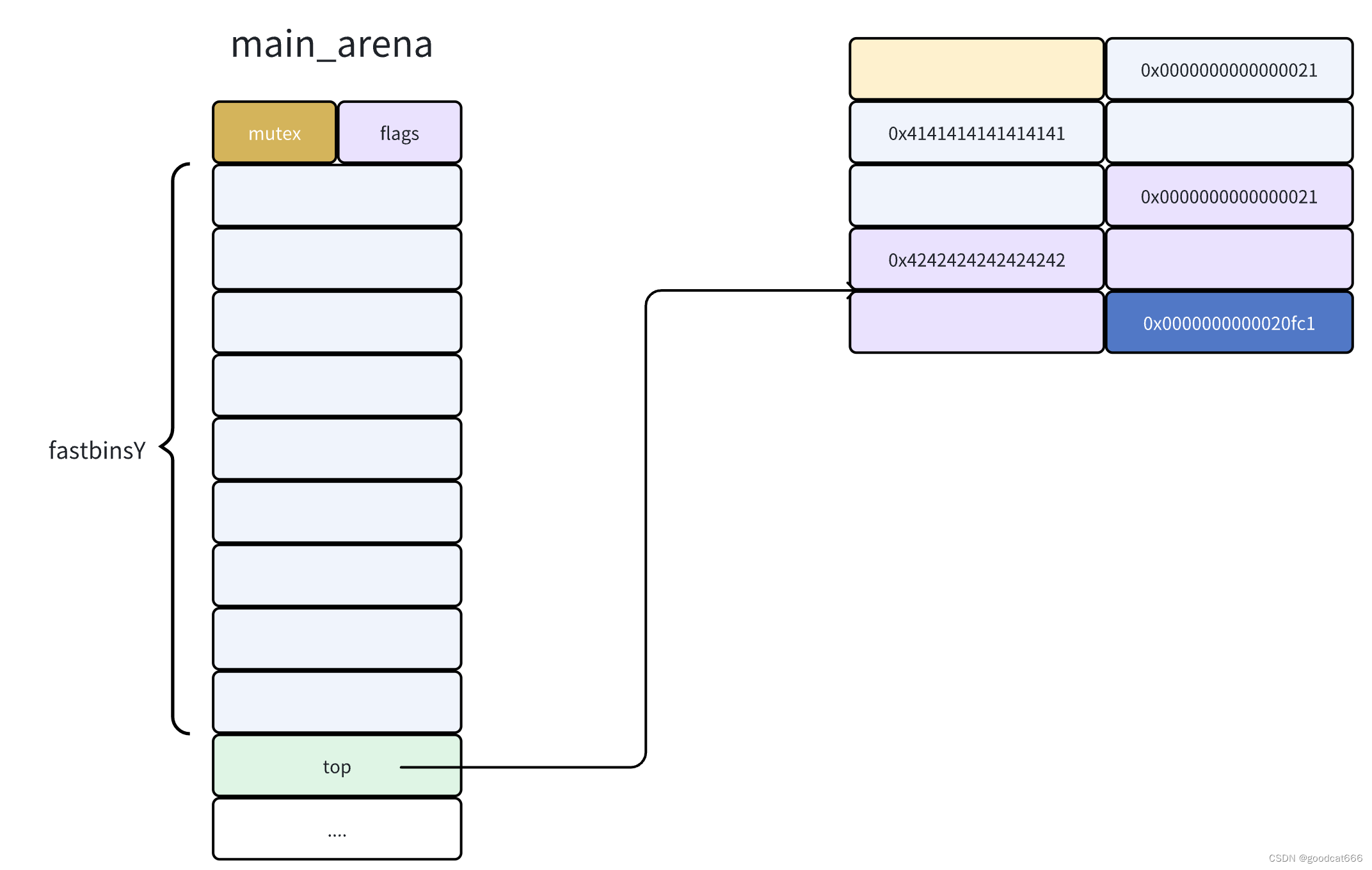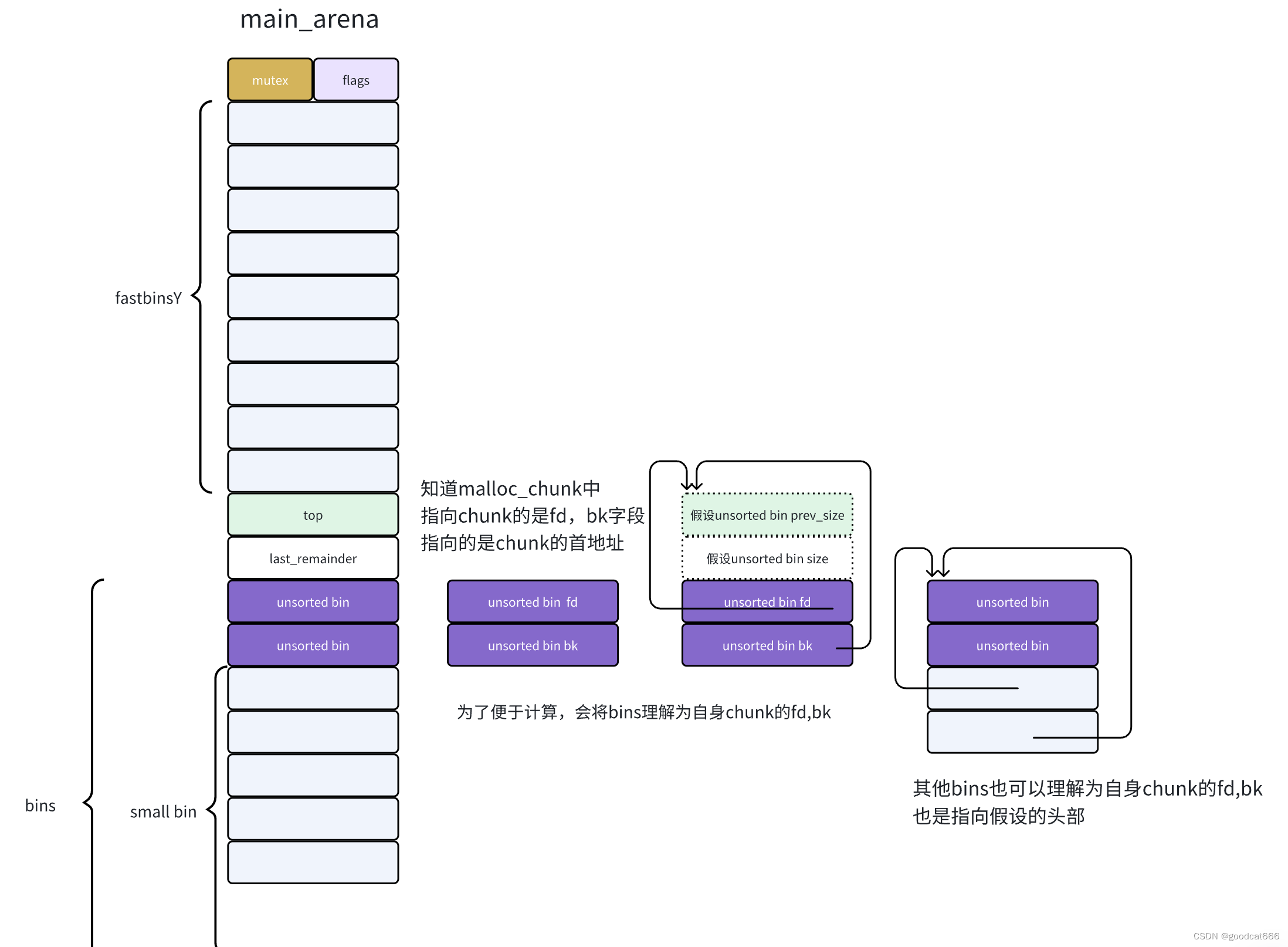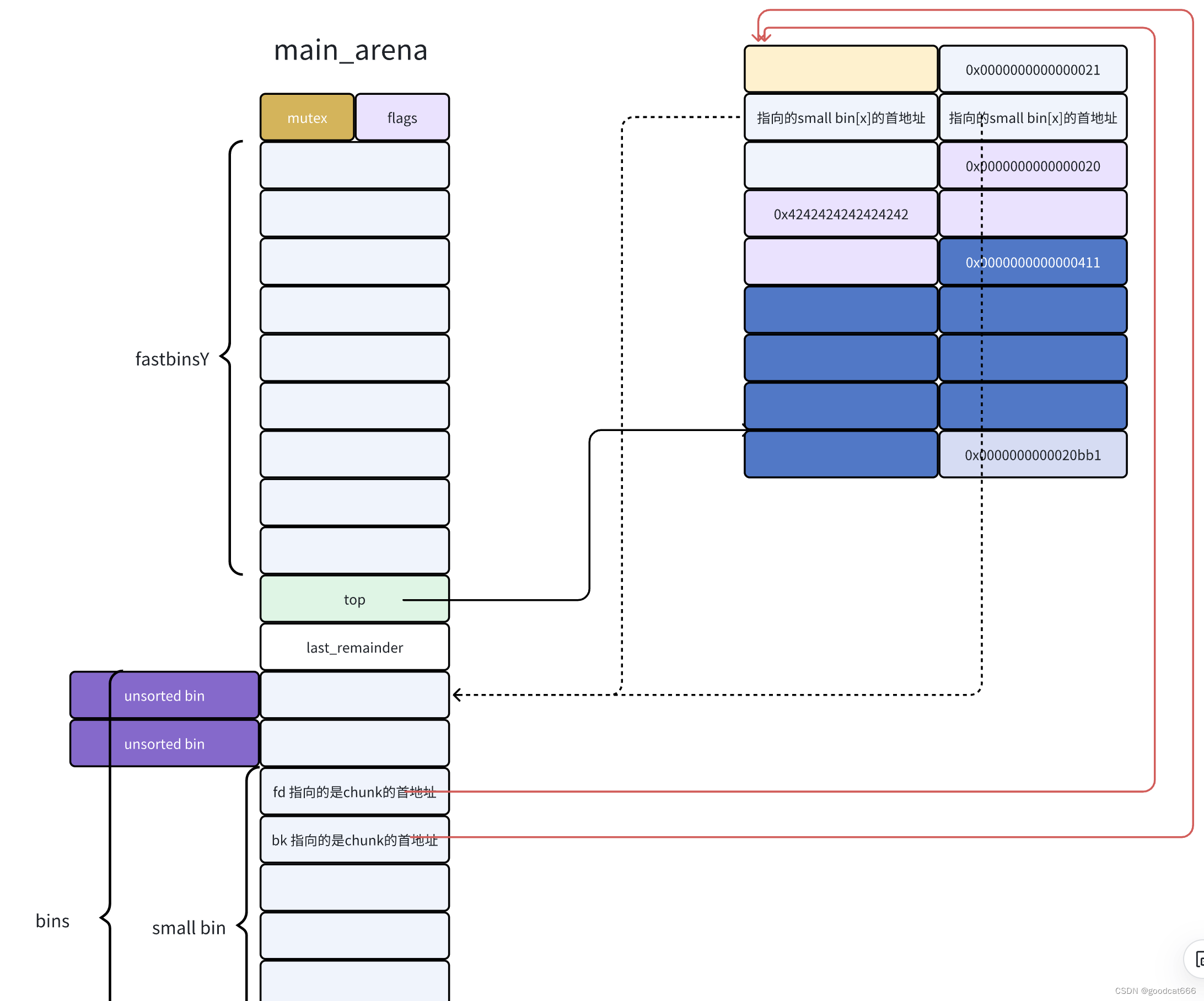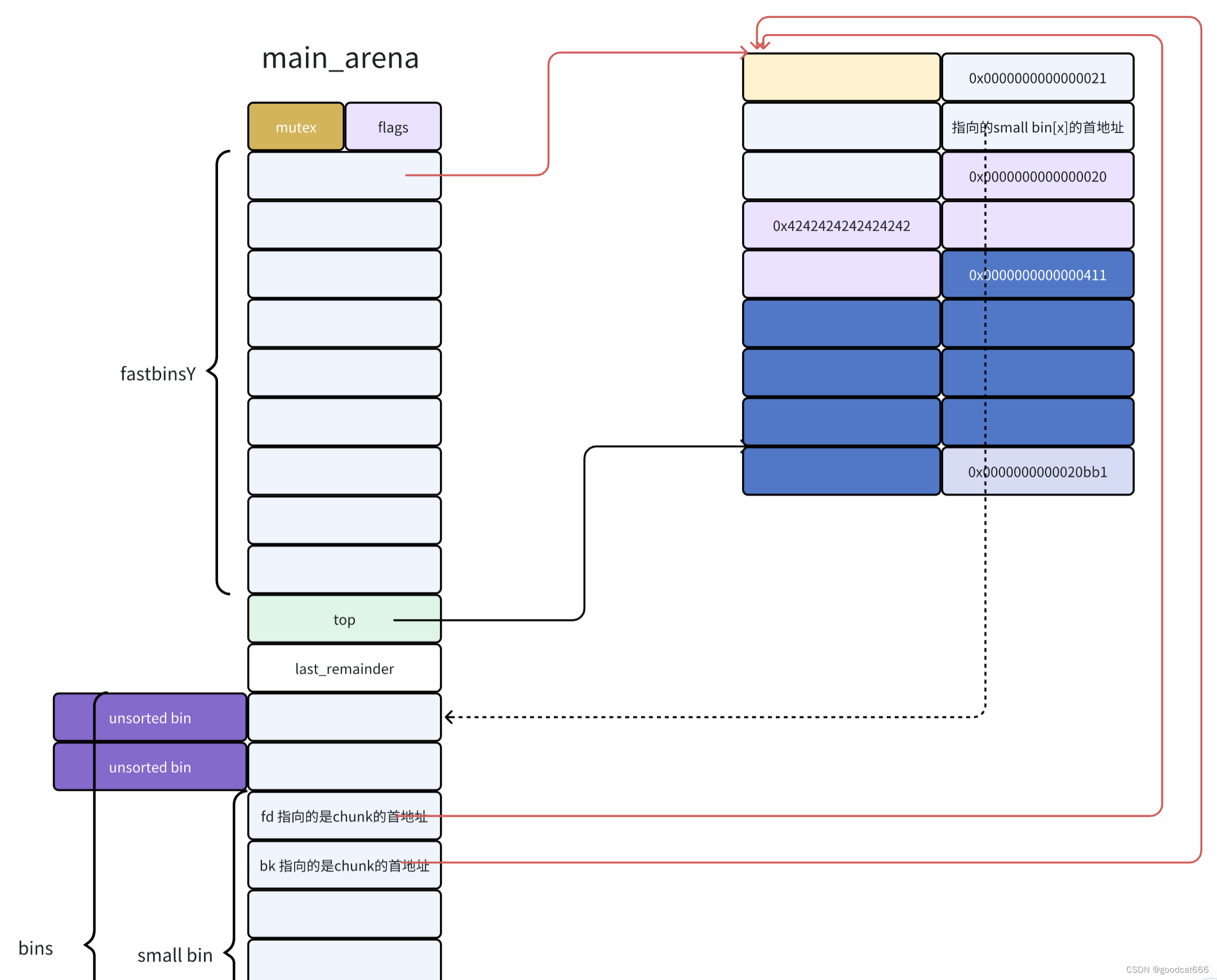how2heap-2.23-03-fastbin_dup_consolidate
#include <stdio.h>
#include <stdint.h>
#include <stdlib.h>
#include <string.h>
int main() {
void* p1 = malloc(0x10);
strcpy(p1, "AAAAAAAA");
void* p2 = malloc(0x10);
strcpy(p2, "BBBBBBBB");
fprintf(stderr, "申请两个 fastbin 范围内的 chunk: p1=%p p2=%p\n", p1, p2);
fprintf(stderr, "先 free p1\n");
free(p1);
void* p3 = malloc(0x400);
fprintf(stderr, "去申请 largebin 大小的 chunk,触发 malloc_consolidate(): p3=%p\n", p3);
fprintf(stderr, "因为 malloc_consolidate(), p1 会被放到 unsorted bin 中\n");
free(p1);
fprintf(stderr, "这时候 p1 不在 fastbin 链表的头部了,所以可以再次 free p1 造成 double free\n");
void* p4 = malloc(0x10);
strcpy(p4, "CCCCCCC");
void* p5 = malloc(0x10);
strcpy(p5, "DDDDDDDD");
fprintf(stderr, "现在 fastbin 和 unsortedbin 中都放着 p1 的指针,所以我们可以 malloc 两次都到 p1: %p %p\n", p4, p5);
}
先分配两个chunk

第一个chunk用于演示malloc_consolidate后的double-free
第二个chunk用于观察prev_inuse,防止与top chunk合并
释放第一个chunk a

现在第一个chunk被放置到fastbin中
稍等一下,先看一下main_arean->bins初始化数据的含义

申请一个large chunk
为了分配这个large chunk。因为large chunk需要的空间较大,会尝试将fastbin中的chunk合并转移到unsortedbin,并将相邻下一chunk的pre_in_use置0。后面遍历unsortedbin得不到使用,就会放到smallbin中
else
{
idx = largebin_index (nb);
if (have_fastchunks (av))
malloc_consolidate (av);
}
第一个chunk malloc(10)已不在fastbin头部了,同时chunk a链入了small bin中

再次释放第一个chunk a
因为这个chunk的大小属于fastbin,且已不在fastbin头部,可以被释放。
被释放到fastbin中,第一个chunk fd数据被清理掉(这里不影响small bin的链接)。

现在small bin和fastbin都存储了chunk a,可以申请申请两次。
利用场景
在通过申请large chunk时,会触发malloc_consolidate,会将chunk a放入到unsorted bin->small bin,此时下一个chunk b的prev_inuse清零
之后将chunk a进行double-free,再申请回来,由于不是从small bin申请回来的,所以下一个chunk b的prev_inuse还是零
现在就可以在chunk a中伪造chunk,释放下一个chunk b,从而产生unlink,通过unlink进行利用
源码分析可以看这里:https://www.lazenca.net/display/TEC/fastbin_dup_consolidate%5BKorean%5D±+Restoring
相关pwn题:
https://blog.csdn.net/seaaseesa/article/details/105856878
https://blog.csdn.net/weixin_44309300/article/details/131027082
本文来自互联网用户投稿,该文观点仅代表作者本人,不代表本站立场。本站仅提供信息存储空间服务,不拥有所有权,不承担相关法律责任。 如若内容造成侵权/违法违规/事实不符,请联系我的编程经验分享网邮箱:chenni525@qq.com进行投诉反馈,一经查实,立即删除!
- Python教程
- 深入理解 MySQL 中的 HAVING 关键字和聚合函数
- Qt之QChar编码(1)
- MyBatis入门基础篇
- 用Python脚本实现FFmpeg批量转换
- 【已解决】c++ 如何给qt的lineEdit传入中文且不乱码
- php 导出文件 PhpSpreadshee 带图片
- 集合类学习笔记(一)
- 架设一台NFS服务器,并按照以下要求配置
- React Native安装了某些不兼容插件后报错error: unknown command ‘start‘
- 设备通过GB28181注册到EasyCVR,平台看不到设备信息的排查方法汇总
- 【好书推荐-第三期】《深入理解Java核心技术:写给Java工程师的干货笔记》全网阅读量千万的Java工程师成神之路学习笔记,Java基础知识点查漏补缺
- 视频剪辑必备,5个免费好用的音效素材网站。
- 0基础学习VR全景平台篇第136篇:720VR全景,认识无人机
- 机器学习---垃圾邮件分类案例